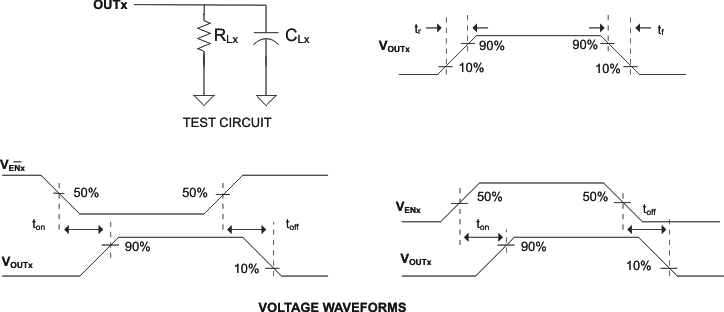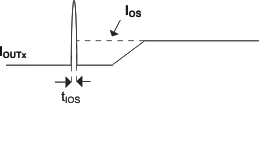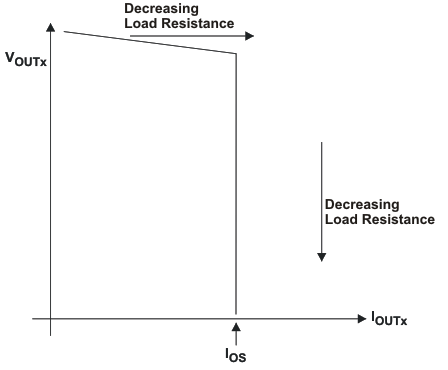SLVS930C December 2009 – October 2020 TPS2560 , TPS2561
PRODUCTION DATA
- 1 Features
- 2 Applications
- 3 Description
- 4 Revision History
- 5 Device Comparison Table
- 6 Pin Configuration and Functions
- 7 Specifications
- 8 Parameter Measurement Information
- 9 Detailed Description
- 10Power Supply Recommendations
- 11Layout
- 12Device and Documentation Support
- 13Mechanical, Packaging, and Orderable Information
Package Options
Mechanical Data (Package|Pins)
- DRC|10
Thermal pad, mechanical data (Package|Pins)
- DRC|10
Orderable Information
8 Parameter Measurement Information
 Figure 8-1 Test
Circuit and Voltage Waveforms
Figure 8-1 Test
Circuit and Voltage Waveforms Figure 8-2 Response
Time to Short Circuit Waveform
Figure 8-2 Response
Time to Short Circuit Waveform Figure 8-3 Output
Voltage vs Current-Limit Threshold
Figure 8-3 Output
Voltage vs Current-Limit Threshold